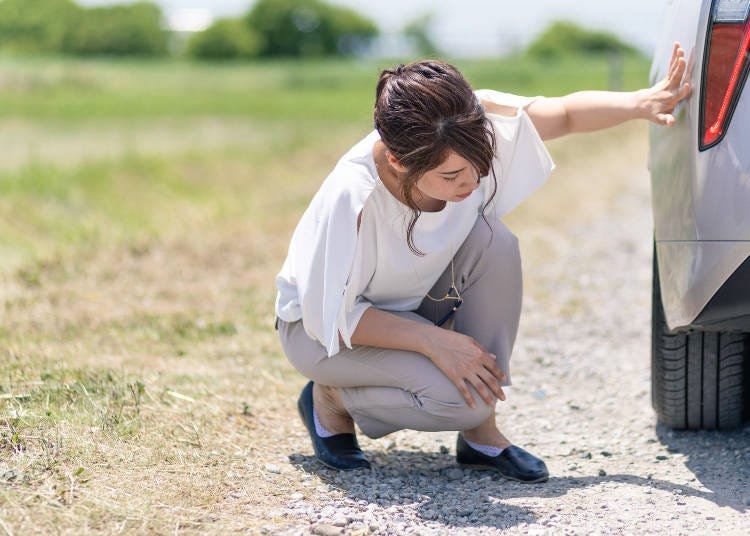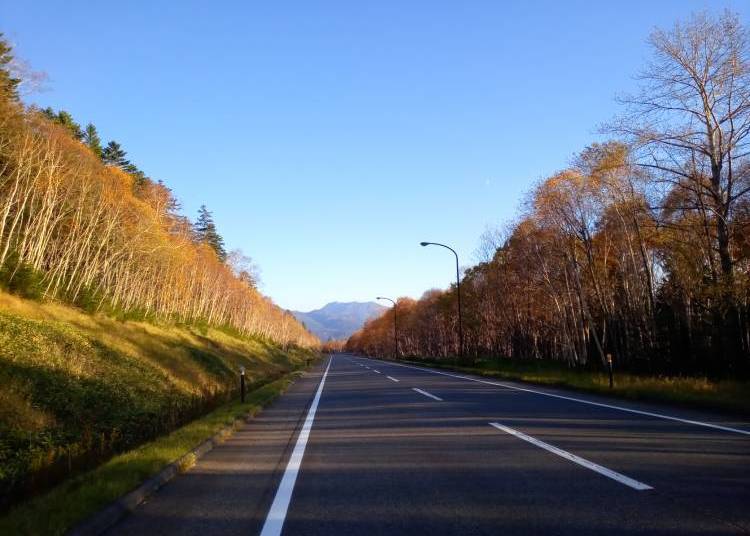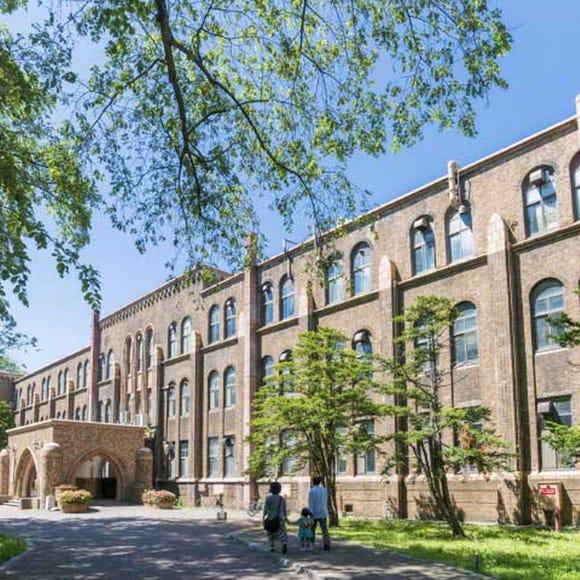
A Local's Guide to Driving in Hokkaido: Road Trip Tips & Suggested Itineraries
- Written by: Hide
Planning a Hokkaido road trip? This local’s guide, written by Hide, a seasoned travel writer and photographer who’s driven across all 47 prefectures of Japan, offers expert tips, practical advice, and sample itineraries to help you explore Hokkaido by car.
Hokkaido, Japan’s northernmost island, is a paradise of vast landscapes, unspoiled nature, rich local cuisine, and relaxing hot springs. Traveling by rental car is the best way to experience its full charm, free from the constraints of public transit and tourist crowds.
Starting from key cities like Sapporo (New Chitose Airport), Asahikawa, or Hakodate, you’ll find a perfect balance of city life and remote beauty.
Drawing on his years of road trip experience, Hide also shares hidden gems and scenic routes that are hard to reach without a car. This guide covers everything from car rentals and driving rules to must-see spots, so you can hit the road with confidence.
(This article may contain promotions)
- Table of Contents
-
- Why Hokkaido is Perfect for a Road Trip
- Budget-Friendly Travel: Why Renting a Car Makes Sense
- Planning Your Hokkaido Road Trip
- Best Time to Drive in Hokkaido
- Renting a Car in Hokkaido: From Booking to Departure
- Driving in Hokkaido: Basic Rules for a Safe Journey
- Roadside Stations & MAPCODEs: Unique Tools for a Smooth Trip
- What to Do in an Emergency: Essential Contacts & Procedures
- Recommended Driving Itineraries for Hokkaido
- Create Your Own Hokkaido Journey!
Why Hokkaido is Perfect for a Road Trip

Hokkaido’s greatest charm lies in its overwhelming scale. Distances between cities are long, and the railway network is less developed than in the main island of Honshu, making rental cars an effective means of travel.
Even driving on a straight road feels like a cleansing experience. Expansive grasslands, mountains that change color with the seasons, small fishing ports, local farm stands, and landscapes that look like they belong in a photo album—these are the delights of a Hokkaido drive.
Hokkaido is also ideal for travelers who don’t normally drive abroad or who are anxious about driving on the other side of the road. Roads in Hokkaido tend to be wider, traffic is lighter than in major cities, and parking is generally more accessible, even in downtown areas. Unlike Tokyo or Osaka, where tight streets and crowded conditions can be stressful, Hokkaido offers a more relaxed, beginner-friendly driving environment.
With a car, you’re not limited to popular destinations; you can also encounter your own discoveries. Urban areas and wild nature, famous landmarks and hidden gems are all seamlessly connected. This is the essence of freely exploring Hokkaido.
Budget-Friendly Travel: Why Renting a Car Makes Sense

While individual rail tickets can be expensive—around 18,000 yen round-trip from Sapporo to Hakodate or roughly 23,000 yen to Wakkanai—a 5-day JR Hokkaido Rail Pass costs 22,000 yen for adults and 11,000 yen for children.
For couples or small groups, a rental car often offers better value: a compact car rental for five days typically ranges from about 29,600 yen to 46,000 yen.
Planning Your Hokkaido Road Trip

Hokkaido spans about 500 km east to west and 400 km north to south—much larger than many travelers expect. With limited time, it’s easy to overpack your itinerary, but narrowing down the areas you want to visit is key to a successful road trip.
Focus on one region at a time to avoid long daily drives and maximize your experience.
Also consider where you’ll stay overnight: while cities like Sapporo and Hakodate offer a wide range of accommodations, smaller towns may have limited options, so booking in advance is recommended.
- Otaru
- Driving time: Around 45 min (40 km). A picturesque historic port city with a charming canal and renowned sushi.
- Cape Kamui (Shakotan Peninsula)
- Driving time: Around 2 hr (105 km). Dramatic sea cliffs and panoramic views of the "Shakotan Blue" waters.
- Niseko
- Driving time: Around 2 hr (100 km). World-renowned for powder snow in winter and diverse outdoor activities in summer.
- Lake Toya
- Driving time: Around 2 hr (105 km). A serene caldera lake surrounded by lush hills and volcanic peaks.
- Lake Akan
- Driving time: About 4 hr 35 min (305km). Beautiful volcanic lake. Amazing Ainu culture and natural beauty.
- Hakodate
- Driving time: Around 4 hr 10 minutes (310 km). A historic port city known for its night view, morning market, and Western architecture.
- Jozankei Onsen
- Driving time: Around 45 min (30 km). A tranquil hot spring town nestled in picturesque mountains near Sapporo.
- Furano
- Driving time: Around 2 hr (115 km). Celebrated for vibrant lavender fields in summer and excellent skiing in winter.
- Biei
- Driving time: Around 2 hr 25 minutes (165 km). Captivating patchwork hills and vast fields, a photographer's paradise.
- Asahikawa
- Driving time: Around 1 hr 50 min (140 km). Hokkaido's second-largest city a hub for northern and central exploration.
- Shiretoko National Park
- Driving time: Around 5 hr 50 min (410 km). UNESCO World Heritage site with pristine wilderness and abundant wildlife.
- Abashiri
- Driving time: Around 4 hr 30 min (335 km). Coastal city known for drift ice cruises in winter and a historical prison.
- Kushiro
- Driving time: Around 4 hr 10 min (305 km). Largest city in Eastern Hokkaido, gateway to vast wetlands and natural parks.

Best Time to Drive in Hokkaido

Towering mountains, mirror-like lakes, primeval forests, and dramatic coastlines: Hokkaido offers encounters with untouched, genuine nature. Summer brings refreshing breezes on cool plateaus, while winter offers quiet, snow-covered drives. Spring awakens flowers and greenery, and autumn paints the mountains in brilliant colors. The ever-changing seasons add rich texture to your journey.
- Spring: Cherry blossoms (late May). Consider areas like Sapporo and Hakodate.
- Summer: Lavender farms, flower festivals, hiking, mountain biking, rafting. Consider areas like Furano, Biei, and Niseko.
- Autumn: Colorful foliage, fresh produce, salmon roe. Consider areas like National Parks (Daisetsuzan, Shiretoko, Rishiri-Rebun-Sarobetsu), Sapporo, and Kushiro.
- Winter: Skiing, snowboarding, Sapporo Snow Festival, drift ice cruises. Consider areas like Niseko, Rusutsu, Furano, Sapporo, and Abashiri.

Tip: Enjoy Tasty Local Cuisine Along the Road

Hokkaido is one of Japan’s top food destinations, known for its fresh seafood, high-quality dairy and produce, wagyu beef, jingisukan (grilled lamb), ramen, and sweets. Coastal areas like Otaru, Hakodate, Kushiro, and Shiretoko are ideal for seafood, while inland regions such as Tokachi, Obihiro, Furano, and Biei are known for vegetables, fruits, and dairy.
A spontaneous stop at a roadside diner or market might also offer an unforgettable culinary surprise.
Tip: Add an Onsen Stop

From Noboribetsu and Yunokawa to Jozankei, Tokachigawa, and Niseko, Hokkaido is home to hot springs with diverse mineral qualities.
To relieve driving fatigue, consider stopping by a day-use onsen or staying overnight at a ryokan. Soaking in an open-air bath amidst nature is a blissful way to reset both body and mind.
Renting a Car in Hokkaido: From Booking to Departure

Major airports like New Chitose and Hakodate offer multiple rental car options, while smaller airports such as Memanbetsu may have only a few.
The three major airports for touring Hokkaido are New Chitose Airport near Sapporo, Hakodate Airport in the outskirts of the city, and Asahikawa Airport near Biei and Asahikawa. Methods to access the city area from each airport.
Book in Advance

Booking online through rental car company websites is recommended, especially during peak seasons, as availability can be limited at airport and station offices.
Online reservations allow you to select the rental period, pick-up and drop-off locations, vehicle type, and insurance options, with prices shown upfront. Many major sites support English, Chinese (Taiwanese), and Korean.
Major Rental Car Companies in Hokkaido
・Nippon Rent-A-Car
・Nissan Rent-A-Car
・Honda Rent-A-Car
・Toyota Rent-A-Car
・Times Car Rental
Special Discount (Nippon Rent-A-Car)
Enjoy 10% off when you book through the website below using the coupon code: iUzM2RfVlJ
Average Hokkaido Rental Car Budget
In Hokkaido, the average cost to rent a compact car for 24 hours ranges from 9,900 to 12,100 yen, with a general average around 10,700 yen. Prices vary slightly by company and may rise during peak seasons. Larger vehicles like SUVs or vans typically cost 18,000 to 30,000 yen or more per day.
Required Documents
To drive a car in Japan, you must be above the age of 18 and possess an international driver’s license within one year from issuance and within one year from the date of entry into Japan.
- An International Driving Permit (issued by a signatory to the 1949 Geneva Convention)
- A valid passport
- A credit card (for deposit and payment)
- Your valid driver's license for your country. (If you have a valid driver’s license from Germany, France, Switzerland, Belgium, Taiwan, Slovenia or Monaco and have a Japanese translation of the license, an international driver’s license is unnecessary. You can receive a translation of the driver’s license from embassies and consulates in Japan or the Japan Automobile Federation (JAF).)
Insurance & Options

Most basic plans include voluntary insurance. Adding Collision Damage Waiver (CDW) and Non-Operation Charge (NOC) protection offers extra peace of mind. If you plan to use expressways often, ask about renting an ETC card for smoother toll payment. If you choose not to rent an ETC card, be sure to use the manned (一般) lane only.
Many vehicles come equipped with car navigation systems, but since they are sometimes offered as optional features, it is important to check in advance. It is advisable to ask at the time of reservation whether a navigation system that supports foreign languages is available.
Refueling & Return

Most rentals require the fuel tank to be full upon return. Find the nearest gas station before returning the car to avoid last-minute stress. Rental car companies often ask for the receipt from the last refueling, so be sure to keep it and have it ready to show when returning the car.
Additionally, when you leave urban areas, the number of gas stations typically decreases. Ensure you have a full tank when starting your long-distance Hokkaido road trip and refuel whenever possible.
- 1. Mantan de onegai shimasu. / 満タンでお願いします。
- “Fill it up, please.”
— Use this when asking the attendant to fill the gas tank completely.
- 2. Regyurā de onegai shimasu. / レギュラーでお願いします。
- “Regular (gasoline), please.”
— Most rental cars use regular gasoline (レギュラー). Ask if unsure.
- 3. Ryōshūsho o kudasai. / 領収書をください。
- “Please give me a receipt.”
— Request this after refueling to show to the rental car company.
- Pump nozzle colors in Japan are generally standardized: red for regular gasoline (レギュラー), yellow for high-octane (ハイオク), and green for diesel (軽油). Always double-check labels before filling up. If you're unsure which fuel to use, check your rental agreement folder: it usually specifies the correct type.
One-Way Rentals
The “One-Way System” lets you return the car at a different location—ideal for long-distance travel in vast Hokkaido. A fee may apply, but it saves time and effort.
Driving in Hokkaido: Basic Rules for a Safe Journey

Foreign travelers driving in Japan should keep the following points in mind.
- Drive on the Left: In Japan, vehicles drive on the left side of the road, and the steering wheel is on the right. Take extra care when turning, especially at intersections. Since the driver’s seat is on the right, the road median will also be on your right side.
- Shoulders Are Not for Driving: The road shoulder (white lines on the side without a sidewalk) is for pedestrians and bicycles only; vehicles may not drive there.
- Obey Speed Limits: Typically 40–50 km/h in cities and up to 100 km/h on highways. Always check posted signs.
- Yield to Pedestrians: Always yield to pedestrians at crosswalks, even if there is no signal.
- Drive Carefully: Hokkaido’s long, straight roads can tempt drivers to speed, but speed traps are common, and accidents often occur due to wild animals like deer and foxes suddenly crossing the road. Always follow the speed limit, stay alert, and take extra caution when you see animal crossing signs, especially in rural areas.
- Stop at Rail Crossings: Always come to a complete stop at railroad crossings. This is strictly enforced and often monitored by local police.
- No Drinking and Driving: Even small amounts of alcohol are illegal and severely punished.
- No Mobile Use While Driving: Phone calls or texting are strictly prohibited. Hands-free devices are recommended.
- Winter Caution: Snow and ice require special attention. Use snow tires or 4WD vehicles. Avoid sudden braking or steering. If you're not accustomed to driving on snowy roads, practice handling the vehicle in a parking lot before your trip.
- Understand Road Signs: Accidents involving foreign drivers unfamiliar with Japanese signs are increasing. Shapes and colors vary by country, so learn Japan’s system: triangles or diamonds warn of hazards; red-bordered circles indicate restrictions or prohibitions. Read more about Japanese road signage here.

Roadside Stations & MAPCODEs: Unique Tools for a Smooth Trip
Roadside Stations (Michi-no-Eki)

Long-distance driving is common in Hokkaido, so it’s important to take breaks every few hours. Michi no Eki, or roadside stations, are ideal rest stops, with 129 locations across the region as of June 2025. All offer free 24-hour parking and restrooms, and 128 provide free Wi-Fi. Many feature local restaurants, gift shops, tourist information, and even hot springs or small museums. In fact, 84 locations have staffed information desks where you can get travel tips or dining recommendations. They’re a great way to recharge and discover more of the local charm along your journey.
MAPCODEs
Japan’s GPS systems use “MAPCODE®”—numerical addresses for specific locations. Even hard-to-find natural areas or facilities are easy to locate with a MAPCODE.
Most rental cars are equipped with this feature, making navigation easy despite language barriers. However, since mapcodes are expressed as numbers, entering them incorrectly can lead you to a completely different location.
Once you’ve set your destination in the car navigation system, be sure to double-check that it matches your intended location. When I go somewhere new these days, I always use a MAPCODE to set the destination.
What to Do in an Emergency: Essential Contacts & Procedures

Despite careful planning, emergencies can occur. Knowing the correct procedures and contacts is vital for a safe and secure road trip in Hokkaido.
Emergency Services
For urgent situations, Japan has clear and efficient emergency dial numbers.
・Police: Dial 110 for incidents such as accidents, robberies, conflicts, or any situation requiring police assistance.
・Ambulance, Rescue, or Fire: Dial 119 for medical emergencies, rescue operations, or fire incidents.
A critical support mechanism for foreign tourists is the multi-language translation service available for both 110 and 119 calls. This service allows for a three-way call between the caller, the dispatcher (or EMT/firefighter), and an interpreter, ensuring accurate communication during a crisis. English, Chinese, Korean, Portuguese, and Spanish are available 24 hours a day, 365 days a year, with additional languages available during weekday business hours.
Roadside Assistance (JAF)
For vehicle breakdowns or mechanical trouble, the Japan Automobile Federation (JAF) Road Service is the primary contact. They can be reached by dialing 03-5730-0111 (telephone charges apply). JAF also offers a free 24/7 over-the-phone interpretation service in 14 languages—simply inform the operator of the language needed, and a three-way call with an interpreter will be established.
Travelers who are members of overseas automobile clubs affiliated with JAF—such as The FIA (Fédération Internationale de l'Automobile), AIT (Alliance Internationale de Tourisme), AAA (the American Automobile Association), or CAA (the Canadian Automobile Association)—may also be eligible for certain JAF services during their stay in Japan. Be sure to present your membership credentials when requesting assistance.
If travelers have auto insurance affiliated with JAF, they should inform their insurance company that they are JAF members, as this may grant access to additional preferential services.
Recommended Driving Itineraries for Hokkaido

Here are a few recommended driving itineraries to help you explore Hokkaido’s diverse landscapes, local flavors, and hidden gems at your own pace.
Create Your Own Hokkaido Journey!

Traveling Hokkaido by rental car isn’t just about convenience—it’s about freedom. Choose your route based on your own instincts, encounter people and landscapes along the way, and weave together a unique story of your journey.
Unbound by fixed routes or timetables, you’ll fully experience a land where cities and wilderness, food and hot springs, the past and present all converge.
This is the essence of a Hokkaido road trip—and it’s only possible with your hands on the wheel.
Take the driver’s seat, and open the door to the great northern frontier.
A web writer and photographer with a passion for traveling by car. He has driven around Japan twice and visited the main tourist spots in all 47 prefectures. With six years of experience, he creates detailed itineraries and travel guides based on his personal journeys. Since he assumes the use of a car, he also introduces hidden spots that are otherwise difficult to access. He holds a TOEIC score of 860, ensuring high-quality content for bilingual audiences.
- Area
- Category
*Prices and options mentioned are subject to change.
*Unless stated otherwise, all prices include tax.
Popular Tours & Activitiess
Recommended places for you
-

Hokkaido University
Other Architecture
Sapporo / Chitose
-
Appealing

Mt. Hakodate Observatory
Forests & Mountains
Hakodate
-
Appealing

Rukku and Uohei
Izakaya
Sapporo / Chitose
-

Farm Tomita
Other Nature
Furano / Biei / Sounkyo
-
Appealing

Odori Park
Parks
Sapporo / Chitose
-

LakeAkan
Rivers, Lakes & Canyons
Abashiri
-

Great Local Eats: 5 Expert-Recommended Local Chain Restaurants in Hakodate
by: Nobuka Kawashima
-
Ad

Smart Ways to Avoid Crowds and Enjoy a Safe, Comfortable Trip to Noboribetsu Onsen
-
Ad

Cycling Through Hokkaido: Discover the Beauty of Memuro and the Tokachi Plains
-

7 Iconic Hokkaido locations that will make your Instagram shine
by: Himanshi Shah
-

Beyond Hakodate and Matsumae: Enjoy the Hidden Gems of Hokkaido’s Donan Area
-

Expert-Recommended: 9 Hakodate Hotels Serving Up the Best Breakfasts in Town
by: Nobuka Kawashima
-

Summer Adventure! Sapporo Day Trip to Enjoy Gorgeous Lavender Fields
-

10 Absolutely Adorable Animals in Hokkaido You May Encounter on a Lucky Day!
-

Sapporo New Chitose Airport (CTS): Complete Guide to Restaurants, Souvenirs, Shopping & More!
-

10 Important Japanese Phrases to Know Before You Enter a Japanese Convenience Store!
by: Teni Wada
-

Kichijoji – Explore Tokyo’s Top-Rated Stylish Suburb in Half a Day!
-

Noboribetsu Onsen: 5 Best Things to Do in Japan's Famous Hot Springs Town!
- #best sushi hokkaido
- #things to do hokkaido
- #best ramen sapporo
- #what to bring to japan
- #new years in tokyo
- #what to buy in ameyoko
- #japanese nail trends
- #what to do in odaiba
- #onsen tattoo friendly tokyo
- #daiso
- #best sweets otaru
- #japanese fashion culture
- #best nature furano
- #japanese convenience store snacks
- #best japanese soft drinks



























